Written by Matt Dickinson
2nd August 2017
ski touring, spring touring, spring, touring, summer ski, summer skiing
In April and May spring is in the air, but winter sports in the mountains are far from over. For keen skiers the late season is the best time of year to tick one of the classic ski tours. Touring in April and May provides some of the most reliable conditions and has many benefits:
• An abundance of daylight means longer days on the mountain and less pressure to reach your destination before nightfall. This means grander ski-mountaineering objectives are more realistic. More daylight gives you more skiing than your legs can handle.
• Above 2000m, good ski conditions are very dependable. A whole winter seasons snow lies on the ground.
• ‘Spring snow’ sometimes dubbed ‘hero snow’ abounds. This refers to a sun softened surface layer over a deep, firm base. Spring snow is not only a joy to ski but also very easy to ski, even on steep ground.
• Glaciated crevasses are well plugged with snow, making for a more extensive and safer high mountain environment.
• The days are warm and the nights are cold and due to the freeze thaw cycles of night and day, faces are generally more stable. Although it is worth noting that the strong sun can have the opposite effect on south and west faces in the afternoons.
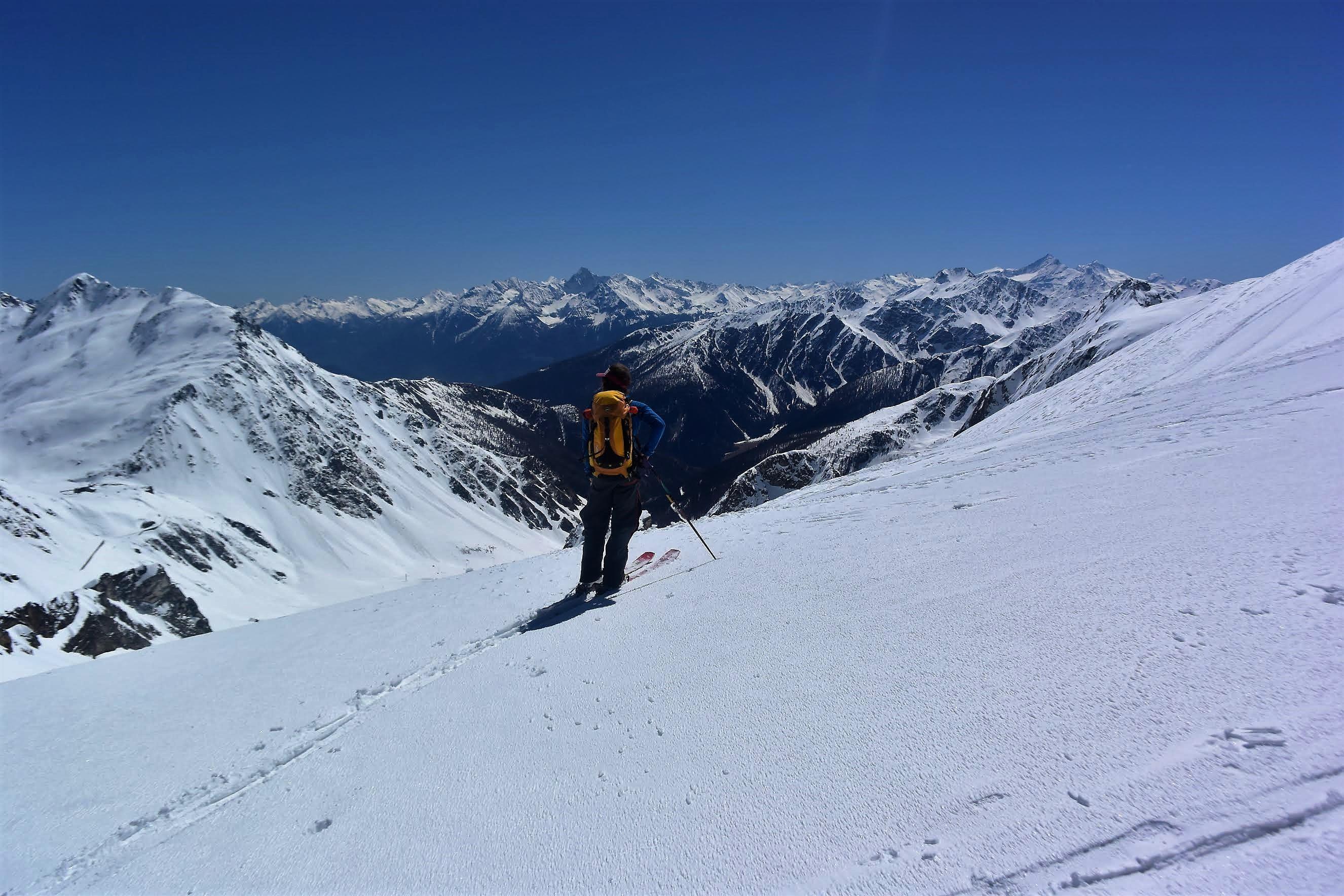
The Skiing
Every type of snow can be found late season. The strength and direction of the sun dictate the character of the snow pack. Throughout a single day, the snow pack can go through several transformations; each stage offers the skier a new texture and experience. Typically, light powder can be found on true north facing slopes. South and west facing slopes are rock hard in the morning, and soften throughout the day, as the warm sun ‘transforms’ the frozen pack, the snow surface becomes incredible to ski on. This is the famous ‘spring snow’, and rivals untracked powder as the ultimate snow experience.
Every skier’s nemesis ‘breakable crust’ is also common in the spring, so it helps to be light on your feet! A good knowledge of snow pack is needed to get the most out of the evolving conditions. Equipment Heavy ski clothing can be exchanged for well ventilated garments. Warm and waterproof clothing still needs to be carried for cold mornings and windy cols. Sinning and skiing in the sun on south and west facing slopes can be blisteringly hot. Narrower ‘all mountain’ skis are the most versatile for spring conditions. Fat skis are heavy and rarely needed in the firmer snow. Ski crampons should always be carried, especially useful in the early mornings when the pack is frozen.
Best Late Season Trips:
Bernese Oberland
Home of the Eiger, the Bernese Oberland is located in central Switzerland .The setting here is a spectacular high mountain landscape complete with giant glaciated valleys more akin to Alaska than the Alps. This classic tour, typically attempted over a week, crosses the massif from North to South. The scenery is among the very best in the Alps with classic views of the Jungfrau, Mönch, and Eiger. The majority of the tour is on huge tumbling glaciers which converge at the source of the giant Aletschgletscher, the largest glacier in the Alps. The trip is especially suited to late in the season, because the whole voyage stays in the high mountains, never needing to descend to valley bottoms. There is the opportunity to make ski descents of several summits including 4000m peaks. Truly this is a beautiful and special place. This tour is fairly similar to the Haute Route in terms of technical and physical demands. Previous ski touring experience is essential and you need to be a competent off-piste skier. A good level of fitness is also required in order to sustain six days of consistent effort.
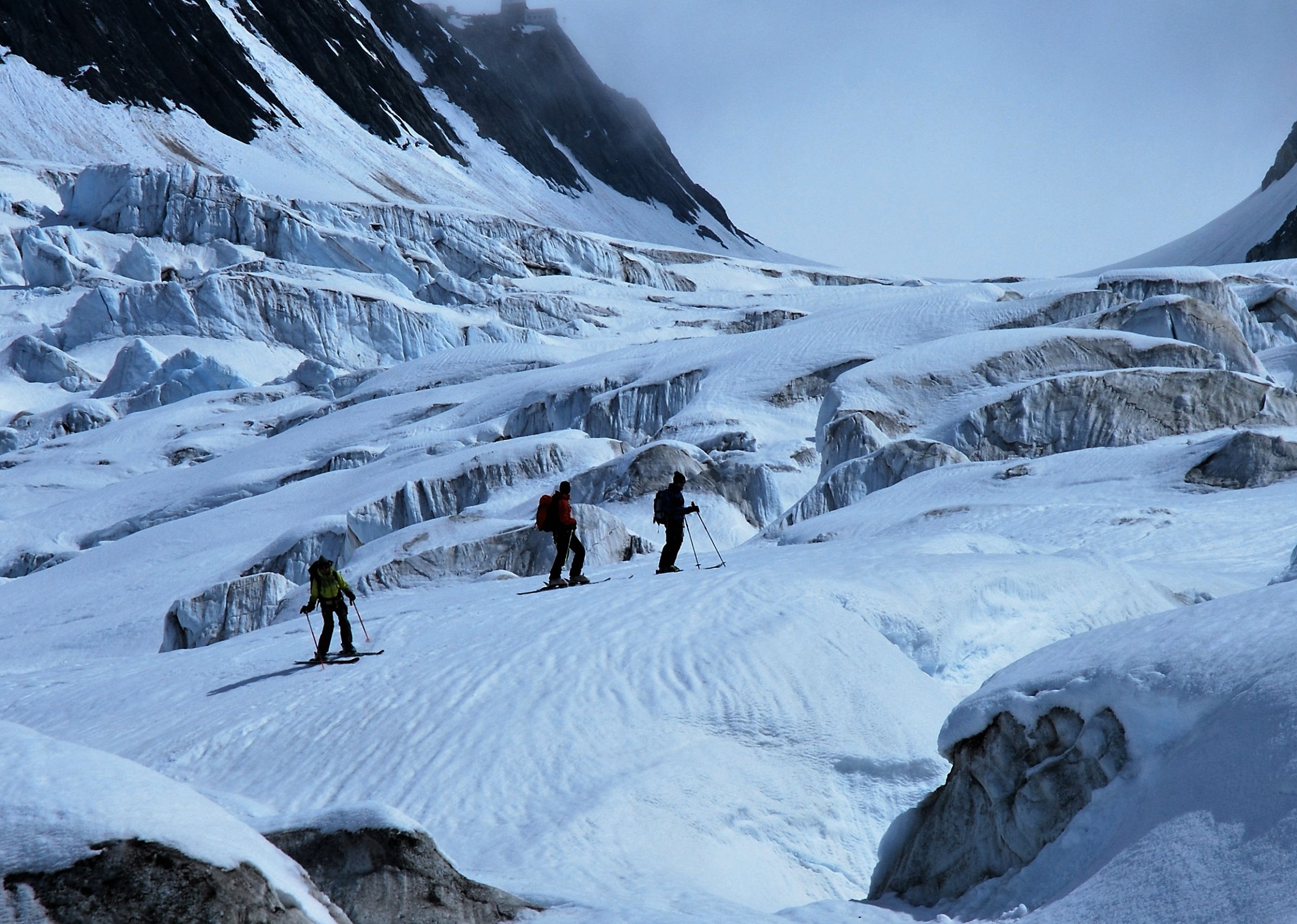
Haute Route
Needing little introduction, the Haute Route is the most famous and spectacular ski tour in the world. The Haute Route traverses through the heart of the Alps, linking the two famous mountain towns of Chamonix and Zermatt. The journey provides the opportunity for outstanding ski ascents and descents on every stage of the tour. It really is a high level route with 5 nights spent in high mountain huts. Most of the time is spend high above tree line crossing glacial terrain surrounded by breathtaking mountain scenery. The Haute Route covers 130km and has around 6,000m of ascent. For advanced skiers it really is a "must do" trip.

Gran Paradiso
This tour is one of the classics of the Alps and popular with Italian ski tourers. The Gran Paradiso at 4061m is the highest mountain entirely within Italy and sits in one of the most idyllic National Parks in the Alps. This tour circumnavigates the massif and cumulates with an ascent of the Gran Paradiso. The trails are generally quieter than in France and Switzerland and when combined with the dramatic scenery and the friendly, Italian hospitality it all adds up to a great week's ski touring.
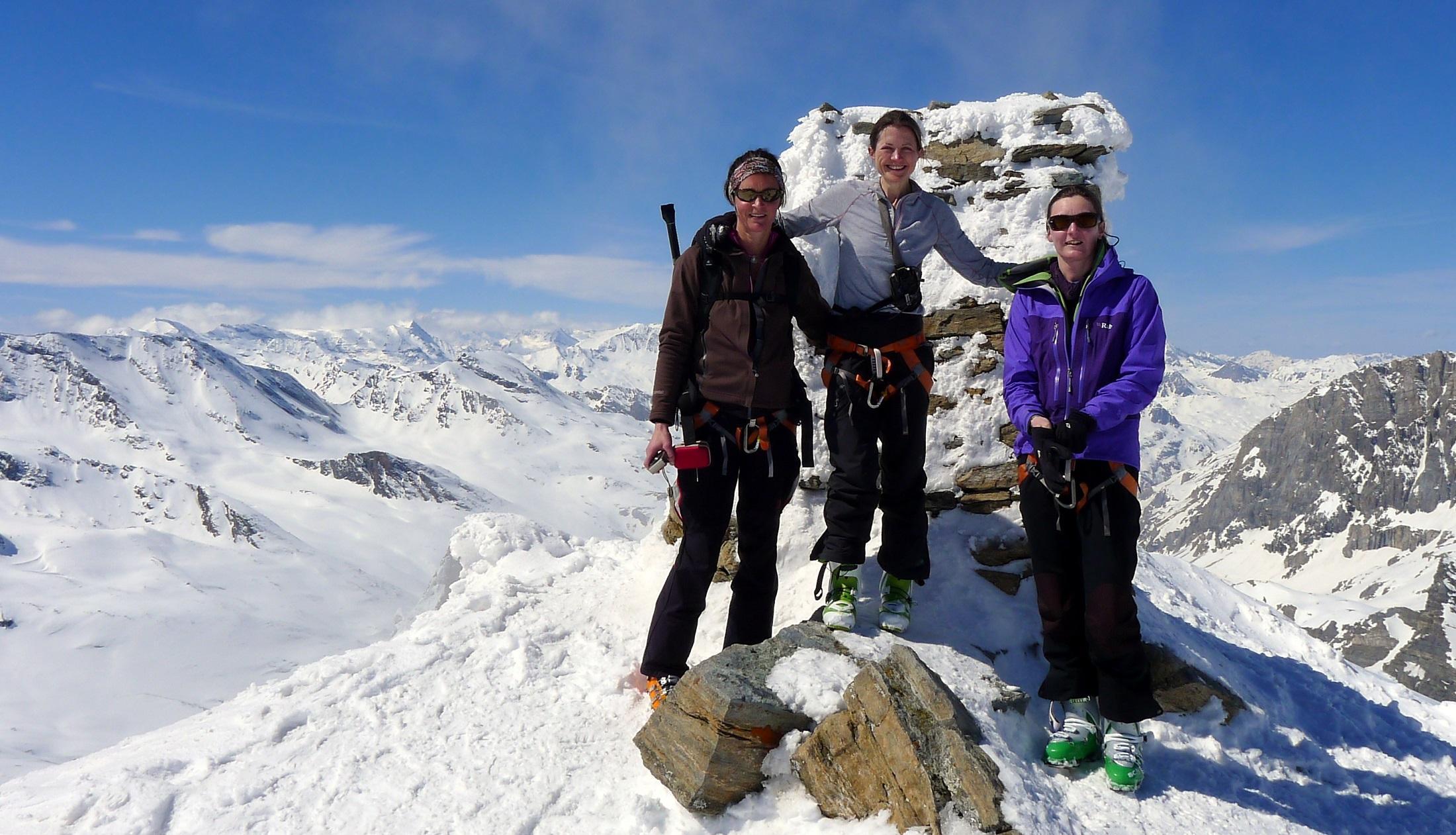
Italian Haute Route
This challenging tour traverses the Monte Rosa chain situated on the Swiss Italian border. The Monte Rosa is the second highest mountain in the Alps and has the highest land area in the Alps over 4000m. There is an element of mountaineering in this voyage, so in addition to being a strong downhill skier, ski-tourers should also be able to handle an axe and crampons. There are fourteen summits over 4000m in the massif, most of which are accessible by skis, so long and exciting descents are assured. The mountain huts in the area are all comfortable with hearty meals and stunning mountain views. The tour includes a stay in the famous Margherita hut which is the highest in the Alps. This tour is suitable only for experienced and fit skiers.
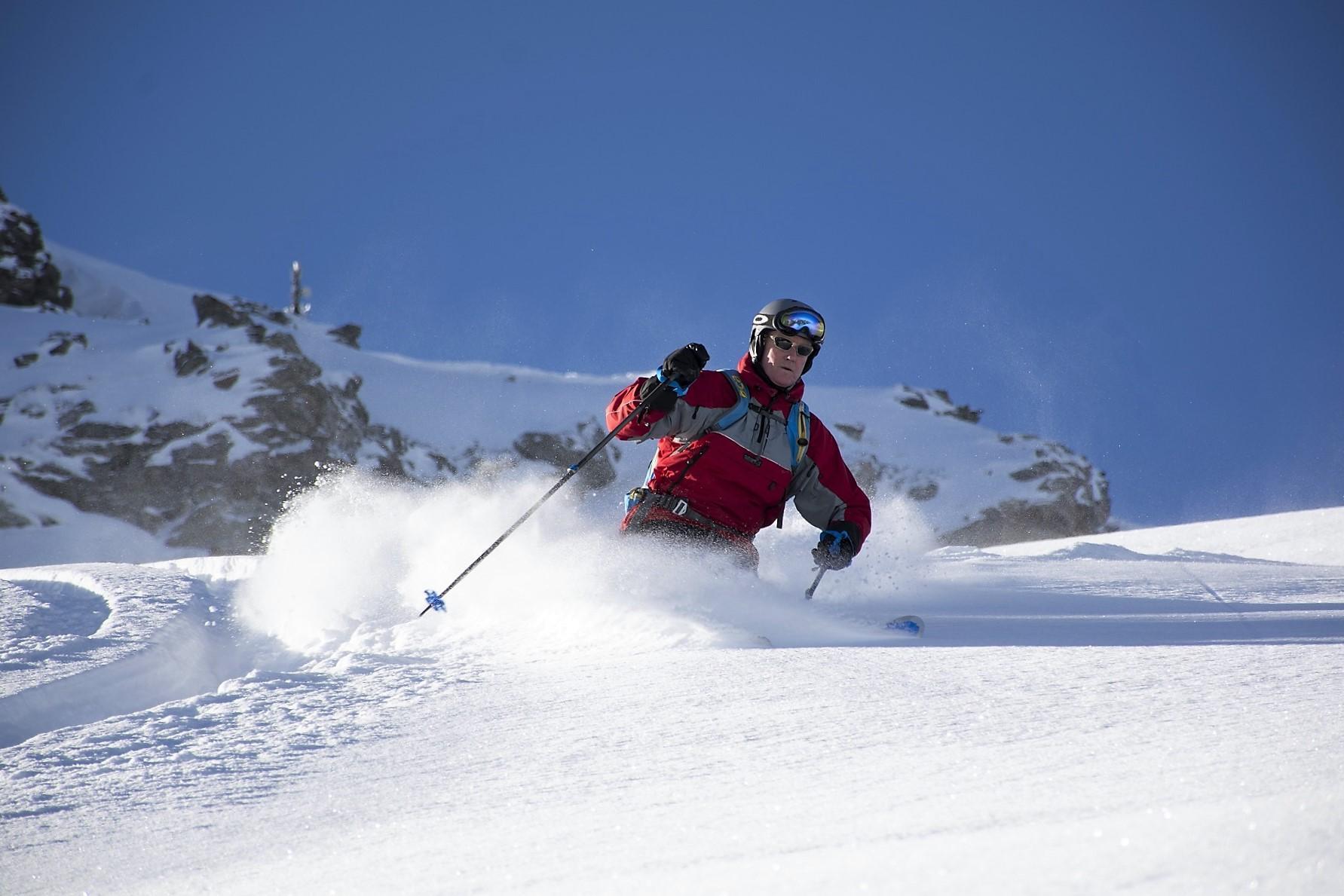
Mont Blanc
A ski ascent of Mont Blanc is the ultimate objective for many ski mountaineers. While not technically challenging, ascending Mont Blanc on skis requires a high level of physical fitness and previous experience using crampons and ice axe. The descent of Mont Blanc takes in some of the most spectacular glacial scenery in Europe. If there is sufficient snow, you can descend by ski right down from the summit to Chamonix, a vertical drop from the summit to the town of nearly 4000m! Before attempting Mont Blanc a well structured programme of acclimatisation and training is undertaken.
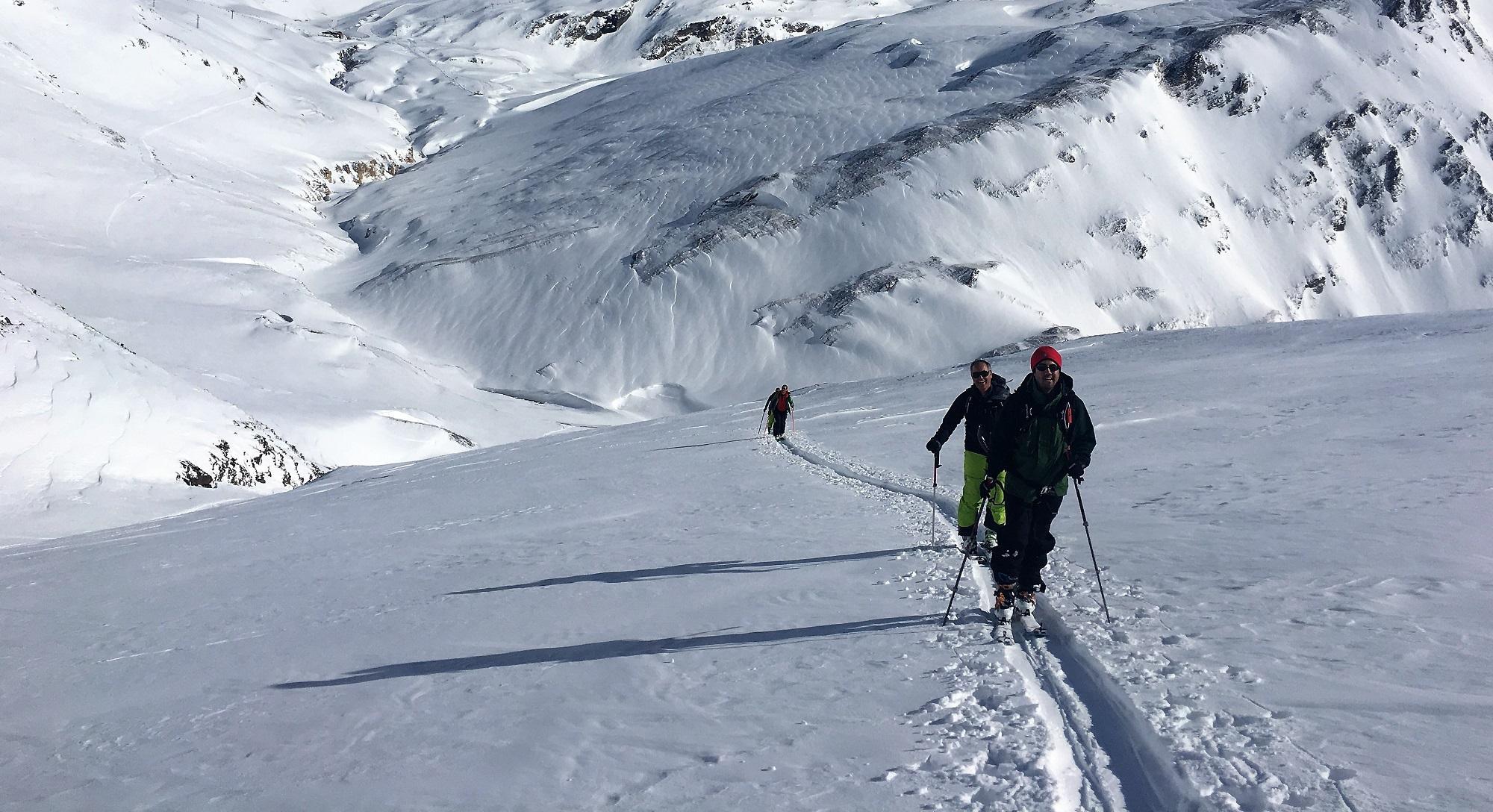
Elbrus
Situated in Russia, Elbrus (5642m) is the highest mountain in Europe, and during April and May snow conditions are usually excellent. This tour is an expedition into the heart of the mighty Caucuses range which nestled between the Caspian and the Black Sea, it's a seriously wild place! The main chain contains many mountains over 5000m and tens of summits higher than Mont Blanc. In spring time the passes and mountains offer exceptionally fine ski-touring in virtually undeveloped surroundings. The initial stages of the trip are spent with some superb day touring in the Adyr-Su and Baksan valley. The ski terrain on Elbrus itself is relatively straightforward, the high altitude being the most difficult obstacle to overcome. Crampons and ice axe are required on the icy upper slopes.
 Off-Piste
Off-Piste Ski Touring
Ski Touring Via Ferrata
Via Ferrata Ice Climbing
Ice Climbing Alpine Glacier Trekking
Alpine Glacier Trekking Worldwide Trekking
Worldwide Trekking



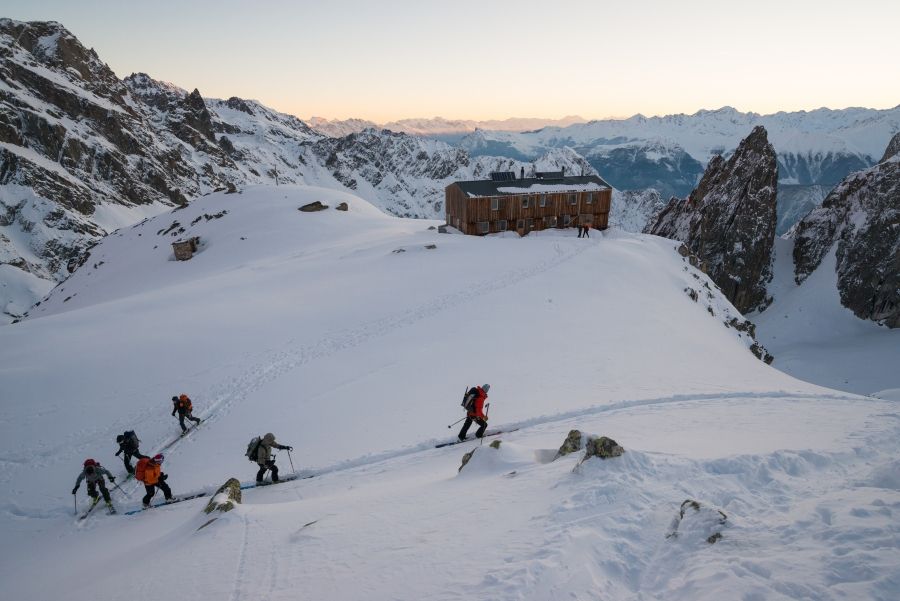





 Travel Website Development
Travel Website Development